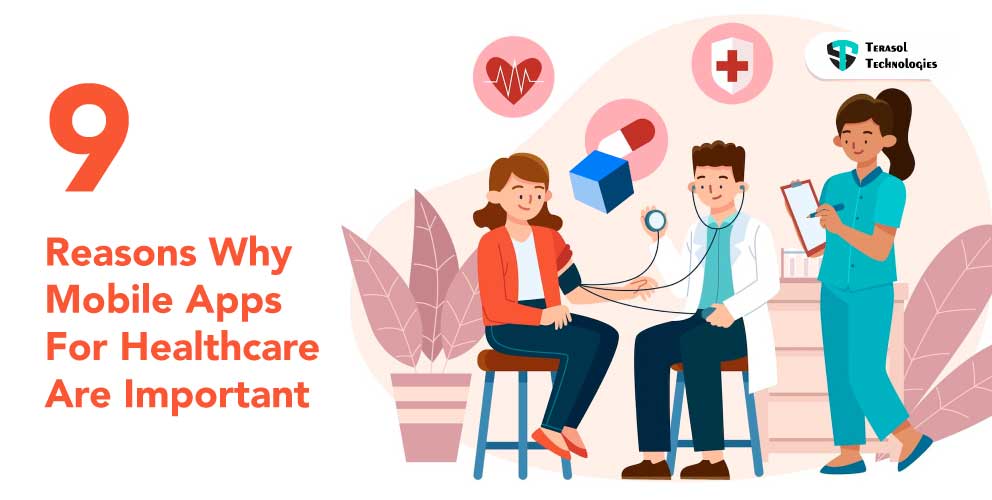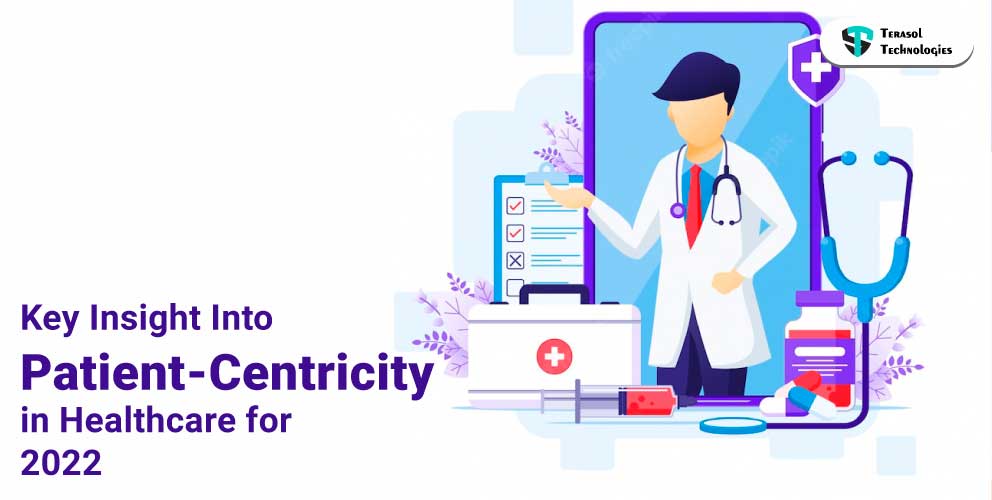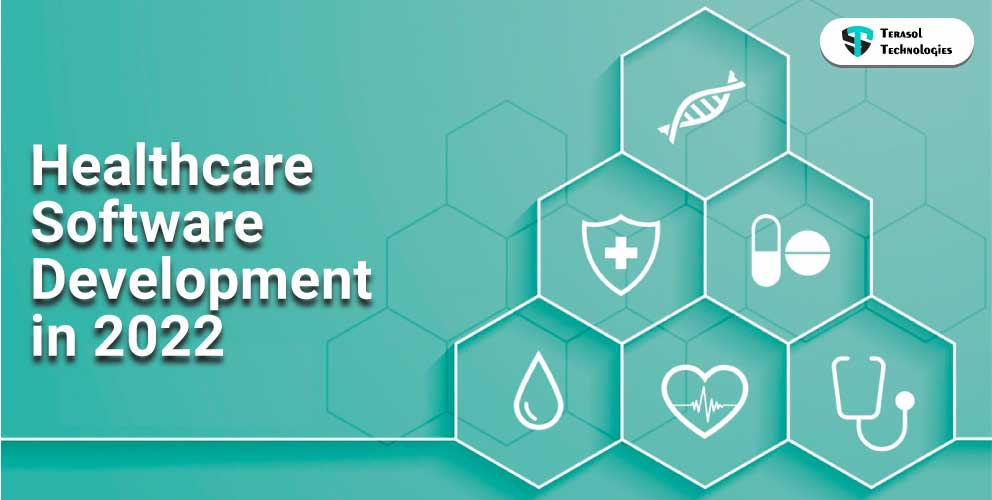Effective Transformation of IoT Applications in Healthcare
According to IHS Markit, around 125 billion devices will be IoT-enabled by 2030.
Alexa, Google Home, Amazon Echo, and other IoT devices have already made their way into our homes, leaving us equally excited and satisfied. However, IoT in healthcare is more than wearables like Fitbit or analytical systems.
In the beginning, IoT application in healthcare was limited to the maintenance and control of big medical machines, allowing suppliers to monitor and maintain the machines remotely. People eventually realized the added benefit that this form of connectivity may provide to healthcare.
What if doctors could monitor patients from the comfort of their own homes?
What if one can have a more accurate and fast diagnosis than physical ones?
IoT is an entire ecosystem that connects hardware, gadgets, and sensors, among other things, to a network that collects and analyses data in a quick, accurate, and real-time manner. The Internet of Things (IoT) is undeniably changing the healthcare business by rethinking the area of devices and human contact in the delivery of healthcare solutions. Patients, families, physicians, hospitals, and insurance companies all benefit from IoT applications in healthcare.
According to Allied Market Research, the global IoT healthcare market is projected to increase from USD 113.75 billion in 2019 to USD 332.67 billion in 2027, with a CAGR of 13.20 percent From 2020 to 2027.
All of the industry's major companies are attempting to capitalize on this expansion by enhancing existing solutions or investing in the adoption of new technology.
So, what exactly is the IoT in healthcare?
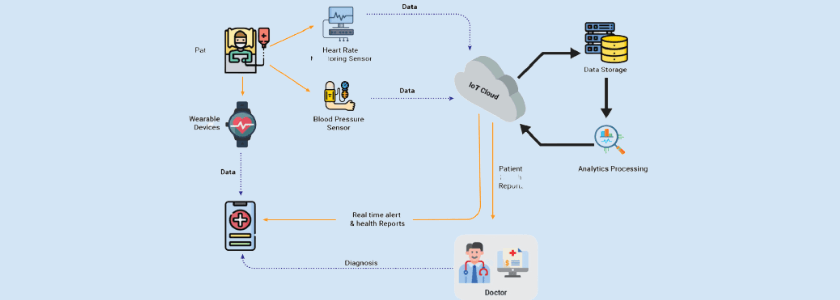
The Internet of Things is a concept based on full ubiquitous computing, that is the processing of data linked to an external activity or thing. Ubiquitous computing is linking electrical devices with microprocessors and sensors so that they can communicate with one another. IoT in healthcare business is an excellent example of omnipresent computing.
IoT is best at is acquiring and analyzing data automatically, it is exactly what an industry like healthcare can benefit from.
Metrics or data like, a patient's heart rate, blood pressure, oxygen level, calorie count, and glucose are just a few examples of the types of data that require the most precise and consistent measurements.
By improving the care and management of healthcare assets, IoT is making waves in the healthcare business.
Digitize your healthcare business with our cutting-edge life-science development services.
IoT and Healthcare- Process
The rise of healthcare-specific IoT solutions, and goods creates a number of possibilities. And the enormous volume of data created by these linked gadgets has the potential to revolutionize healthcare.
The IoT in healthcare features a four-step architecture, which are essential steps in a process:
Step 1: The deployment of interconnected devices, such as sensors, actuators, monitors, detectors, and video systems, is the first step. The data is collected by these devices.
Step 2: Data from sensors and other devices is typically in analog format, which must be gathered and transformed to digital format for further processing.
Step 3: After the data has been digitized and aggregated, it is pre-processed, standardized, and sent to a data center or the cloud.
Step 4: At the required level, the final data is managed and examined. When applied to this data, advanced analytics provides actionable business insights for better decision-making.
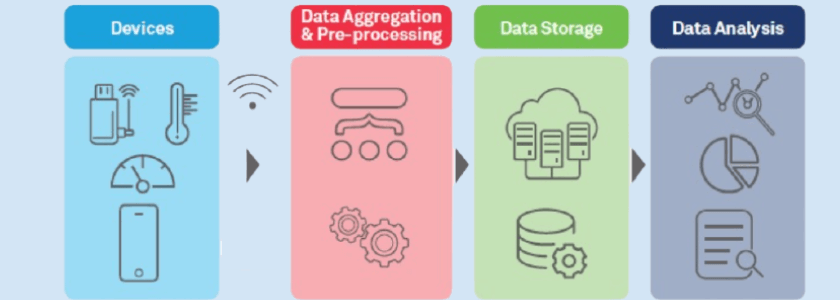
IoT in healthcare is changing by ensuring better care, improved treatment outcomes, and lower costs for patients. IoT solutions and automated apps also provide better processes and workflows, greater performance, and a better patient experience for healthcare professionals.
The IoT is Changing Healthcare in 7 Ways
1. Frictionless Asset monitoring
Since the pandemic began, the same surge in innovation has occurred in healthcare, with the emergence of telehealth. Data such as blood sugar levels, blood pressure, and ECGs will be monitored, collected, and transferred using IoT devices.
This means that the data can be accessed by the patient, doctor, or insurance company at any time, from any location, using any device. Heart failures, asthma, diabetes, and other medical emergencies can all benefit from real-time monitoring.
The Internet of Medical Things (IoMT) is a collection of connected devices that continuously measure and monitor data. IoMT will break down each medical problem into its parts to identify the best answer in the life science industry.
2. Drug management
One of the most pressing concerns confronting the healthcare business today is the cost of developing and managing medications. IoT devices and processes could help manage these costs more effectively.
3. Quality, monitoring, compliance
IoT may be used to save money, improve patient safety, capture better data, monitor more reliably, and make more direct and immediate doctor-patient contacts. It has significant implications for providing high-quality patient care while using real-time data and ensuring that patient records are updated regularly.
Hospitals would profit greatly from IoT devices that provide improved hygiene monitoring findings, it will go hand in hand with the benefits of real-time environmental monitoring that have previously been anticipated.
4. Tools for ensuring safety and adherence
The most pressing worry is safety, especially given the need to maintain utmost security while successfully tracking the patient's data. This is particularly difficult for larger institutions. In life science and healthcare, the Internet of Things (IoT) provides low-cost, cutting-edge instruments for monitoring daily activities. Doctors may follow and contact patients (and vice versa), ensuring that help is available as soon as possible.
5. Closed-loop for diagnosis/ treatment
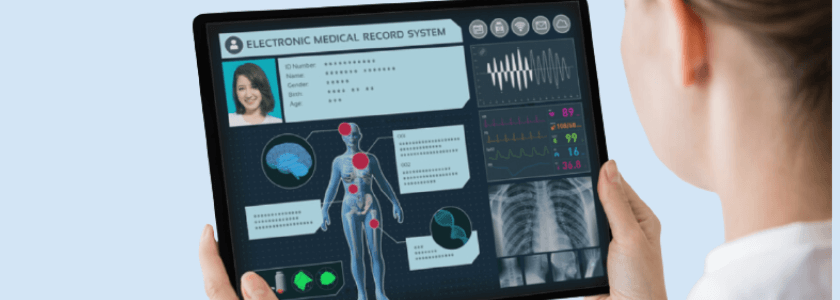
Because of the real-time data in the patient's register, a patient can communicate with the doctor right away, no matter where they are. It entails more accurate diagnoses and treatments, as well as drug distribution based on the patient's prescription. It is a cost-effective method that entails remote health monitoring, accurate diagnosis, and an improvement in the patient's quality of life.
6. Real Data
IoT healthcare devices are connected directly to a cloud server and share data via SSL (secure service layer). IoT devices not only gather and report data but also analyze it, with final reports that may include visualizations such as graphs. Wearable sensors and technologies allow for continuous vitals monitoring. Although it is difficult to store and evaluate a large amount of data transmitted by such devices.
7. Capturing disease symptoms digital biomarkers
In life-threatening situations, alerts are key in delivering vital data to doctors who can capture real-time symptoms, providing the doctor enough information to make the best diagnosis possible for the reoccurring health problems. It can also aid in the monitoring of chronic diseases and the comprehension of critical health variables, resulting in a strong and exact report.
IoT Applications in Healthcare
Because of its diverse range of applications in various industries, the rise of IoT is exciting for everyone. It has a variety of uses in healthcare. We provide IoT support for the design and development of healthcare software solutions.
Here are a few noteworthy IoT healthcare applications:
1. Treatment for Cancer
For medical professionals, curing cancer has always been a primary priority. Medicine and the use of innovative healthcare technologies such as activity trackers help doctors improve their patients' medical conditions. Cancer patients' movements, exhaustion levels, activity levels, hunger, and other factors are tracked with activity trackers. Artificial intelligence-enabled IoT wearable devices can help prevent cancer by identifying irregular patterns that indicate sickness.
2. Hospital Care Streamlining
The majority of hospitals have infrastructure problems. Most nurses' and doctors' experiences are impacted by paperwork and long, stressful lineups. Electronic databases, a management system to track staff members' activities and patients' health, and remote monitoring of medical equipment are all examples of IoT solutions.
3. Ingestible sensors
A sensor-enabled swallowable tablet can track and improve how often people take their meds. When the pill comes into touch with the fluid, sensors included in the pill emit an electrical signal. These sensors could be a lifesaver for diabetic patients, as they can help reduce symptoms and provide early warning of serious health problems.
4. Connected Inhalers
Asthma is a chronic lung disease that affects hundreds of millions of people worldwide. Inhalers that are connected provide information and control over a patient's symptoms and therapy.
5. Health Monitoring in Real-Time
By utilizing real-time monitoring of occurrences such as heart attacks and asthma episodes, connected devices have the potential to save lives. A smart medical gadget connected to a smartphone app is referred to as real-time mentoring.
6. Use of computer vision
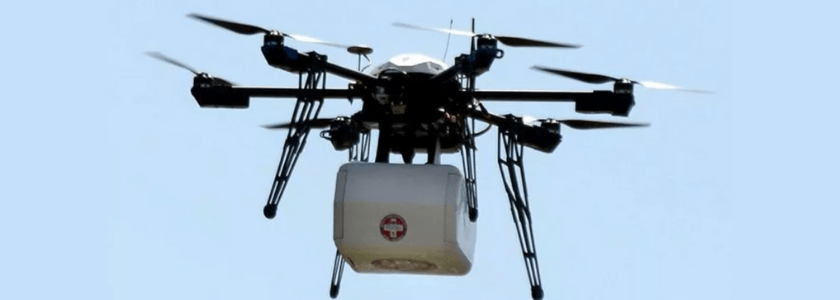
Drone technology, which combines computer vision and artificial intelligence, tries to replicate visual perception and, as a result, decision-making based on it.
The IoT applications in healthcare listed above are just the beginning. By bringing the benefits of innovations to doctors and patients, the Internet of Things will alter the healthcare business by redefining healthcare solutions and upgrading the digital healthcare landscape.
Future of IoT Applications in Healthcare
IoT in healthcare has already altered the way the business operates, and it will continue to do so in the future. IoT in healthcare business is not a stand-alone solution. To assist healthcare facilities evolve in a meaningful way, all IoT devices and networks must be coupled with other technology. Embedding communications and healthcare will be an element of the future digitization in healthcare.
Most of these technologies are already being used by IoT to help healthcare improve, and this trend will only increase. Healthcare and the Internet of Things will become intertwined sooner rather than later, fundamentally changing how we approach healthcare.
🔖Bring Digital Revolution to Life Science Industry with our services.
Are you and your company ready to change mindsets and maximize the benefits of innovation? Contact us and speak with one of our specialists to learn more about it and how your company or project may profit from it right away!
